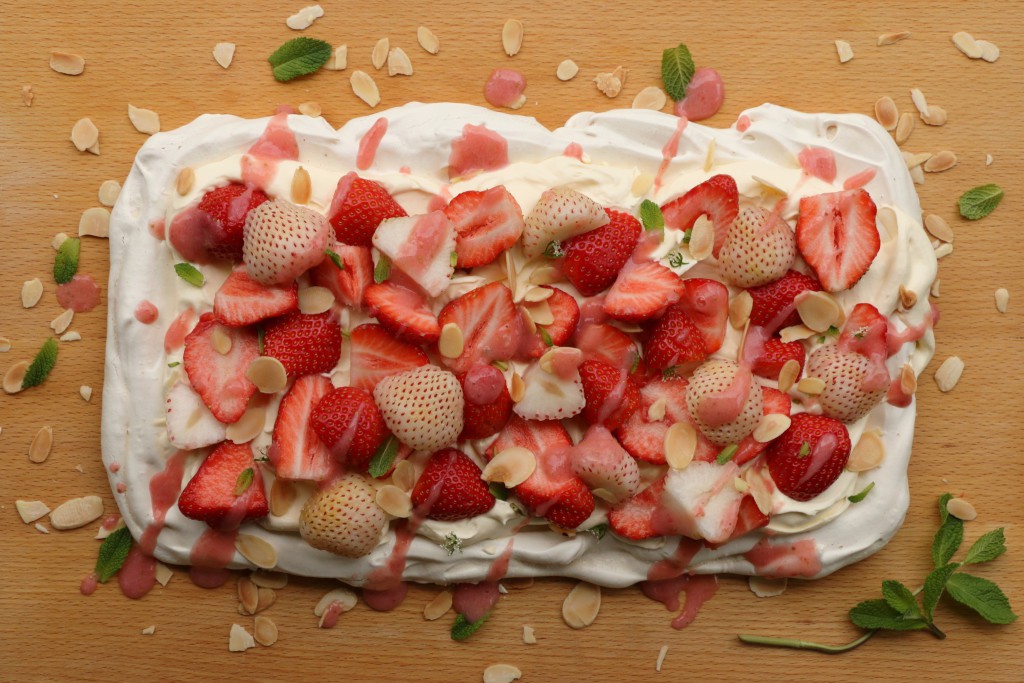 The problem with fruit desserts is often the fruit. Even in season it’s not easy to find varieties grown for flavour, or specimens picked when ripe enough to taste of something. There’s cause for rejoicing therefore when one does find fruit that looks and smells full of sun. When that happens, it’s worth celebrating with fairly simple treatments that make the most of your bounty’s natural charms.
The problem with fruit desserts is often the fruit. Even in season it’s not easy to find varieties grown for flavour, or specimens picked when ripe enough to taste of something. There’s cause for rejoicing therefore when one does find fruit that looks and smells full of sun. When that happens, it’s worth celebrating with fairly simple treatments that make the most of your bounty’s natural charms.
Pavlova is a favourite way to showcase fruit of all kinds, fresh and frozen, winter and summer. I sometimes find, though, that this versatile and straightforward dessert can be heavy on the meringue and cream, and light on the fruit. This misses the point, if you ask me, as well as elevating the calories and reducing the element that has real food value.
To rectify the balance, I like to make a shallower meringue base that allows proportionately more fruit. I also cut back a bit on the amount of cream and sometimes use some half-fat crème fraîche alongside – not just to cut down on the calories, although that’s also an advantage – but because I think the slight tang tastes good and makes for a less rich, while still creamy, pudding.
I shape the meringue into a large, shallow rectangle and serve the pavlova directly from the cutting board I use to assemble it. It looks impressive, yet comfortably casual, and cutting it is a breeze. People like the drama of the presentation and the way you end up with fruit in every bite.
This is about the psychology of portion control as well. The thinner meringue made with two egg whites instead of four doesn’t look any less generous, and serves as many people. It also takes less time to cook and dry in the oven, so making it is faster. And it’s easier and more fun to assemble – there’s more of a blank canvas to be creative with and less worry about structural integrity.
Making these few simple adjustments to the proportions of the ingredients, and the shape of the meringue, makes a difference to the experience of making and eating this lovely fruit dessert. It’s more expensive with the cost of the extra fruit, but it is also more substantial and satisfying, so goes further. And I won’t say it’s good for the waistline, but it does have more fruit, less processed sugar and less fat. It’s still an indulgent pudding without doubt – but when we indulge, the indulgence should be worth the calories. With this extra fruity version, we can have our pav and eat it.
I’ve given here one recipe for the meringue base, and two ways to fill it: one with early English strawberries and imported pineberries; the other with a combination of blueberries (or blackcurrants) that are lightly cooked, fresh blueberries left in their natural state, and the entirely optional freeze-dried powdered bilberries*, a wild blueberry, which you can find in health food shops.
You can use any fruit to top your base, using roughly the proportions of 400-450g (about one pound) of prepared fruit, and a total of 375ml (1½ cups) cream and crème fraîche, for a two-egg-white meringue, which will serve 6 people. Passionfruit’s intensity is superb, as are rhubarb and strawberry, or raspberry and red currant.
Some frozen fruits work very well, too, including most berries (strawberries are the exception, as they become mushy). If you freeze and thaw them in a single layer rather than one mass, you can retain their shape pretty well.
Make the meringue base in time to completely cook before assembling the pavlova. The meringue will need about 1 – 1 ½ hours to bake, and about the same again to cool in the oven, so allow 3-4 hours. It can be made one day ahead and kept on its tray wrapped in cling film.
It’s best to assemble the dessert soon before serving, so the fruit is fresh and the sauce doesn’t run, and to keep the meringues crisp. You can whip the cream a few hours ahead to make assembly quicker. If you do assemble ahead, make sure your serving dish will fit in the fridge, as it’s tricky to transfer the filled meringue.
A little fruit purée to drizzle over, and/or some toasted nuts, a bit of mint, citrus zest or unadulterated powdered fruit, can amplify the flavours. What really matters, though, is the fruit; when at its best, you may feel no embellishment is needed.
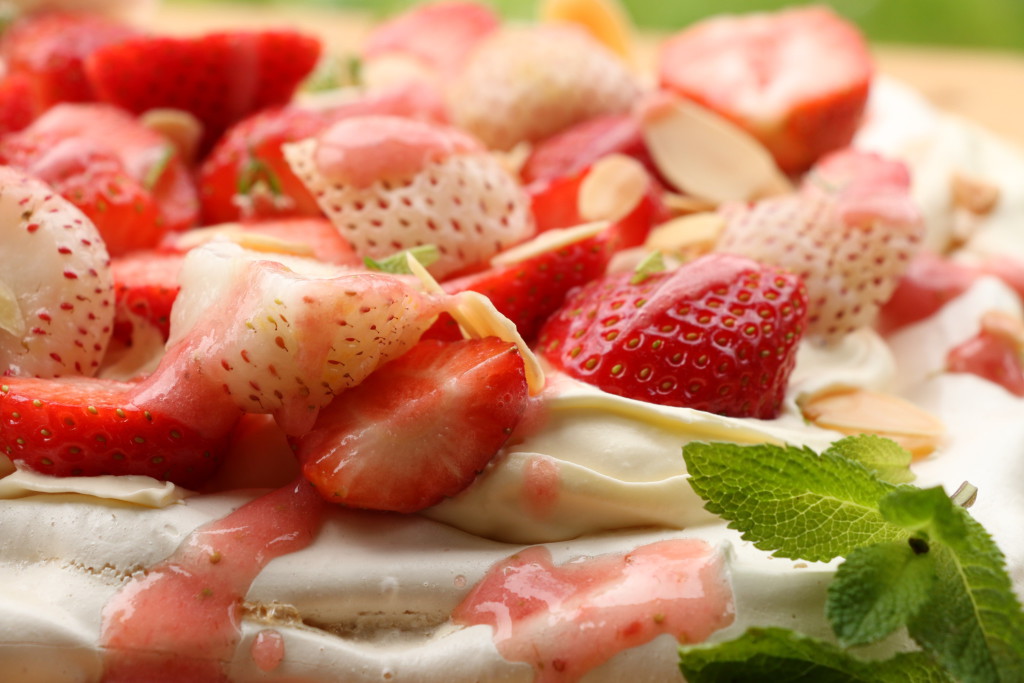 I. Meringue base for extra-fruit pavlova
I. Meringue base for extra-fruit pavlova
For one pavlova to serve 6
(This recipe can easily be doubled to make two pavlovas)
Ingredients:
- 2 egg whites, room temperature
- A pinch of salt
- 50g (¼ cup) caster (granulated or extra-fine) sugar
- 75g (½ cup) sifted icing sugar (confectioner’s sugar)
- 1 teaspoon vanilla extract
Directions:
- Heat the oven to 130C/gas mark 1/2 (250F), and line a baking sheet with parchment or foil. Make sure your egg whites, bowl and beaters are completely free of yolk and grease.
- With an electric mixer on medium speed, beat the whites and salt until you reach the soft-peak stage (the whites will flop a little on the beaters).
- Gradually add the caster sugar (granulated or extra fine sugar) and beat until the mixture has increased in volume and just holds its shape.
- Add the icing sugar (confectioner’s sugar) on low, and then increase to medium-high, beating until the sugar is smoothly incorporated and the meringue is thick and glossy. Mix in the vanilla.
- With a large spoon, drop dollops of the mixture onto the prepared tray and spread it into a rectangle about 2cm (¾ inch) thick with a metal spatula, leaving a shallow lip on all sides, until about 30cm (12 inches) by 15cm (6 inches). The meringue will expand in the oven about 3cm (1 inch) in every direction, so bear this in mind.
- Put the meringues in the oven and immediately turn the heat down to 110C/gas mark 1/4 (225F). Bake for 60 to 90 minutes, turning once for even cooking, until the meringue is a pale off-white in colour, looks and feels set, and sounds almost hollow when tapped. Turn off the oven and open the door a crack, leaving the meringues to cool gradually in the residual heat.
- When completely cool, remove to a large cutting board you are happy to serve the dessert from (choose one that fits in the fridge if you need to assemble it ahead). Or leave on the tray and cover with cling film. You can make it one day ahead.
 II. Pavlova with strawberries, pineberries and mint
II. Pavlova with strawberries, pineberries and mint
Serves 6
Ingredients
For the meringue base:
- 1 cooked and completely cooled meringue base (recipe above)
For the fruit:
- 400-450g (about 1 pound) fresh strawberries, washed, dried and hulled
- 1 handful (about 5-6) pineberries
For the cream:
- 250ml (1 cup) double or whipping cream (heavy cream)
- 125ml (½ cup) half-fat crème fraîche (or use cream)
- 1 teaspoon sugar
- ½ teaspoon vanilla
For the optional garnish:
- Trimmings of the strawberries, plus 3-4 whole strawberries and a small piece of banana to make a small purée
- A few small mint leaves
- 30g (1 ounce) toasted sliced almonds
- Edible flowers
- Sprinkling of icing sugar (confectioner’s sugar)
Directions:
1. Prepare the fruit: Wash and dry the strawberries and pineberries. Just before assembling the pavlova, hull them and discard the hulls, and cut in half; keep any usable fruit trimmings. Make a small amount of purée for garnish by blitzing the trimmings and 3-4 whole berries in a mini-blender or food processor with a 3cm (1-inch) piece of banana to thicken it.
2. Prepare the cream/s: Up to three hours before serving, or just before, combine the cream, 1 teaspoon of the sugar and the vanilla in a large bowl and whisk by hand or with an electric mixer until lightly mounding; it should hold some shape but still be soft, so don’t overbeat. Refrigerate. If also using créme fraîche, keep it separate from the cream and add the remaining 1 teaspoon sugar to it; stir gently (don’t overmix or it will get too thin).
3. Position your meringue base on the serving board or platter, securing it if needs be with a dab of the whipped cream.
4. To assemble the pavlova: Spoon the whipped cream onto the meringue base, leaving a margin free all around the edges. Dollop over the crème fraîche if using. Arrange a layer of halved strawberries, and tuck in the pineberries in a pattern that pleases you. Scatter over the toasted almonds if using. Strew the strawberry-banana purée across the pavlova, if using. To finish, garnish with a few small mint leaves and/or some edible flowers if you like. Serve straight away, or refrigerate for an hour in advance of serving.
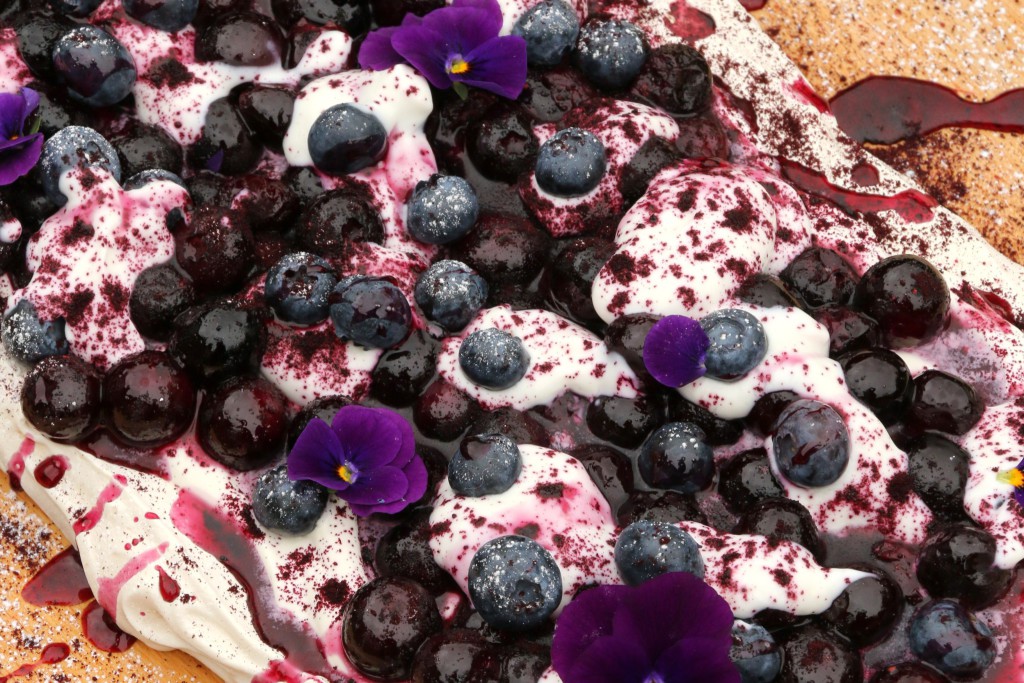 II. Pavlova with blueberries and powdered bilberries*
II. Pavlova with blueberries and powdered bilberries*
Serves 6
Ingredients:
For the meringue:
- 1 cooked and completely cooled meringue base (recipe above)
For the fruit:
- 400-450g fresh or frozen blueberries (about 1 pound or just under) Or use a combination of blackcurrants and blueberries
- 1 tablespoon maple syrup (or sugar); treble or add to taste if using blackcurrants
- 1 -2 tablespoons water
- 2 teaspoons lemon juice
- optional: small pinch of arrowroot for the berry purée to garnish
For the cream:
- 250ml (1 cup) double or whipping cream (heavy cream)
- 125ml (½ cup) half-fat crème fraîche (or substitute cream)
- 2 teaspoons sugar
- ½ teaspoon vanilla
For the optional garnish:
- Approximately 2 tablespoons dried and powdered bilberries*
- Lemon zest from one lemon
- Edible flowers
- Sprinkling of icing sugar (confectioner’s sugar)
* The brand I use is Finnish, and 100 grammes of the powder represents 900 grammes of fresh berries, so you get a real nutrient boost as well as extra flavour from a sprinkling. If you can’t find it, the pavlova will still be delicious without it.
Directions:
1. Prepare the fruit: Wash and dry the fresh blueberries (or blackcurrants if using) and put two-thirds of them (reserve the others) in a small saucepan over medium heat, with the maple syrup, lemon juice and water (increase maple syrup or sugar if using blackcurrants, keeping some tartness as the meringue will add a lot of sweetness). Cook gently for about 5 minutes until darker in colour and slightly softer, but still intact and just beginning to give up some blue juices. Carefully drain off the juices and reserve. Put the pan of berries in a shallow sink of cold water to stop the cooking, and set aside until ready to assemble the pavlova. Use the juices and about a tablespoon of the reserved berries to make a small purée for garnish: blitz them together in a mini-blender or food processor until smooth and set aside. (If you prefer a completely clear sauce, heat the juices in the microwave with just a small pinch of arrowroot, stir well and let it come to the boil – it will furiously boil up, so use a large enough cup – and cool completely before using.)
2. Prepare the cream/s: Up to three hours before serving, combine the cream, 1 teaspoon sugar and the vanilla in a large bowl and whisk by hand or with an electric mixer until lightly mounding; it should hold some shape but still be soft, so don’t over beat. Refrigerate. If also using créme fraîche, keep it separate from the cream and add 1 teaspoon to it; stir gently (don’t over mix or it will get too thin).
3. Position your meringue base on the serving board or platter, securing it if needs be with a dab of the whipped cream.
4. To assemble the pavlova: Spoon the whipped cream onto the meringue base, leaving a margin free all around the edges. Spoon on the cooled, cooked blueberries (or blackcurrants). Drop some smallish spoonfuls of crème fraîche over the cooked berries, and sprinkle on the uncooked fresh berries. Strew the sauce across the pavlova and then to finish, sprinkle on the dried bilberry powder and add some edible flowers if you like. Serve straight away, or refrigerate for an hour in advance of serving.
See also:
“Cambridge in March: English asparagus and rhubarb”.
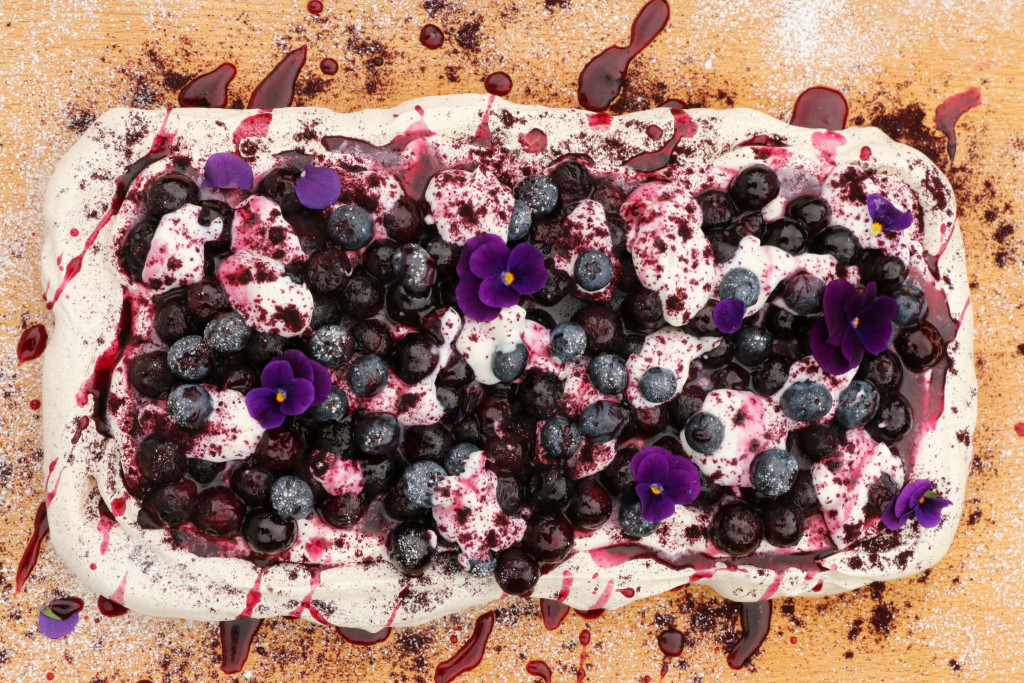
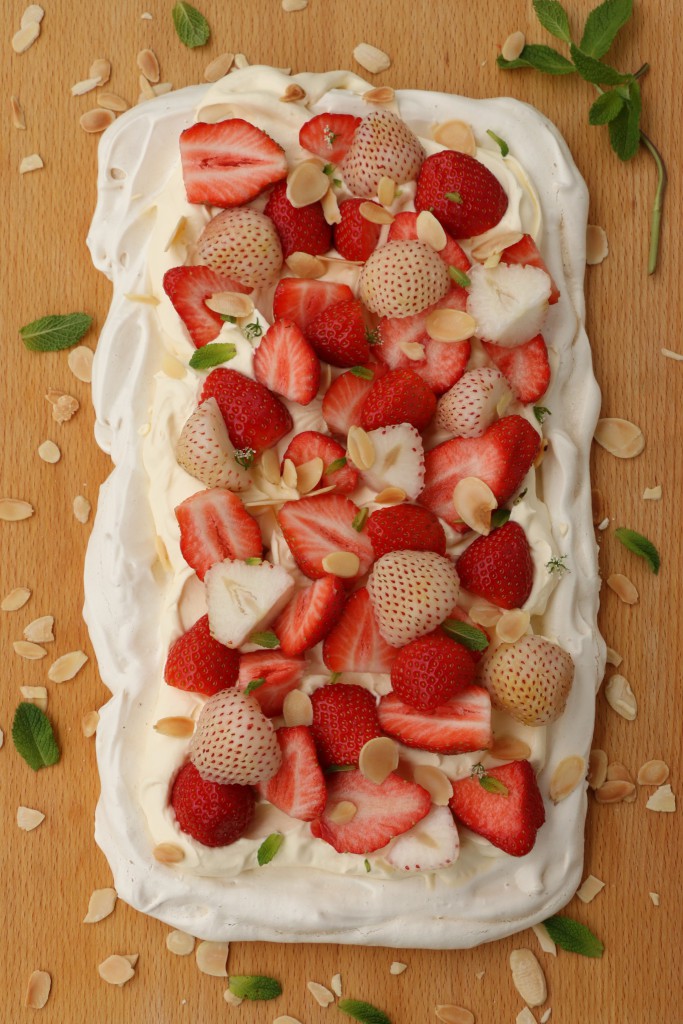
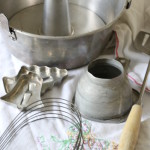

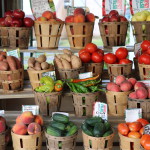
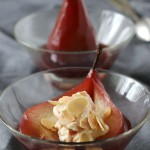
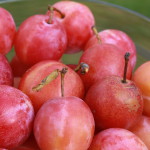
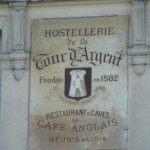 Tour D’Argent: a remembrance of things past at today’s prices
Tour D’Argent: a remembrance of things past at today’s prices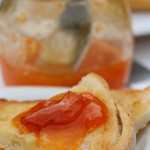 Apricots, les abricots
Apricots, les abricots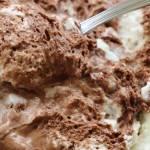 I used to cook in a piggery
I used to cook in a piggery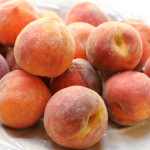
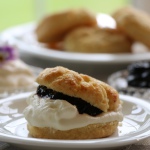
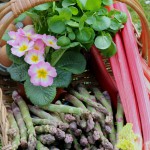

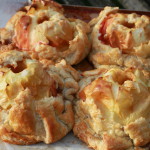
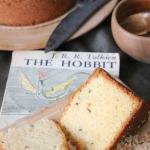 Seed cake and story
Seed cake and story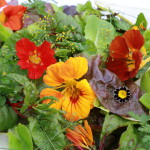
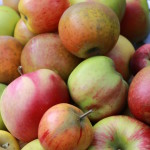
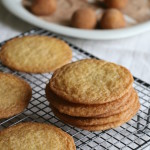
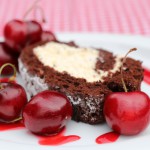
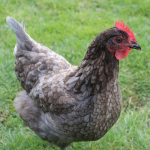
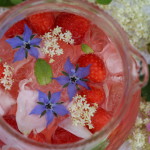
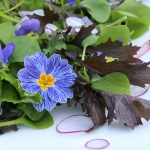

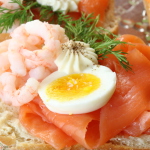
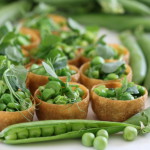

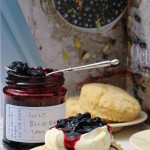
 Easter is late this year
Easter is late this year
Leave a Reply